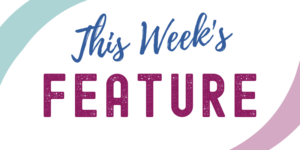As we await our return to meeting with our choirs and ensembles, WLP Managing Editor, Mary Beth Kunde-Anderson, GIA Editor-at-large, David Anderson, and GIA Senior Project Editor Michael Silhavy all offer their suggestions for encouraging continuing fellowship and musicianship!
From Mary Beth:
• Find tools for your choir members to (better) learn to read music, and perhaps sight-read. (Resource suggestions: Sight-Sing a New Song / Level Up!)
• Encourage them to brush off an instrument to express musicality and keep up disciple with improving musicianship. (Resource Suggestions: Simple Gifts / Play for the Lord)
• Encourage them to take remote voice lessons, perhaps set something up with a voice teacher you trust, and even have the parish help with the cost if that’s feasible.
• Send them recording/video links of really good choral singing of a variety of kinds of music. (Resource Suggestions: Recordings featuring The Cathedral Singers)
From David:
Regarding Fellowship…
- Consider a Zoom session weekly or twice each month with your choirs. Do a simple check-in. Pose a question for them to consider and share such as, “How can we stay strong as a choir next year?”
- Consider doing a Zoom sectional with only one section of the choir! Zoom with the Altos, Zoom with the Tenors, etc.
Regarding Musicianship and Ministry…
- Realizing that group singing doesn’t work on Zoom, you can still have them all mute and lead them in several vocal exercises. Teach newer warm-up exercises. Two of my favorite resources are Evoking Sound: The Choral Warm-Up by Sabine Horstman and Innovative Warm-Ups for the Volunteer Choir (Buy the singer edition and find a way for choir members to pick them up as we return to church.) Some colleagues aren’t big into warm-ups, (see Michael Silhavy’s previous posts!), but we all agree on having singers ready to sing!
- Consider having the choirs and cantors read parts of Sing to the Lord (especially the opening chapters and the chapter on choirs and music ministry)
- Send them a piece of music and a recording. During these weeks away, I sent my choirs Youtube videos of many of the pieces we were not able to do as we ceased gathering in church. (This kept them connected to the song!)
- Get The Structures and Movement Breathing by Barbara Conable and spend several zoom weeks on teaching about posture and breathing. Now is the time to focus on some foundational aspects of our singing and choral practice.
From Michael:
I’d like to offer a suggestion that can be utilized at any time, even when we resume singing – encouraging self-study of music.
This may be one for the back porch on a lovely evening with a favorite beverage in hand. I encourage my singers to interact with their music more than just at rehearsal and Sunday. A very few singers in my choir are able to learn notes at home with or without the help of a piano. But I do encourage them to learn “the music” at home.
- Do our singers even know what’s in their folder at any time? Encourage them to identify the title with the cover; it saves rehearsal time looking for the piece.
- Have them read the text. Can they complete the phrase or hyphenated word before they turn the page?
- Do they know where the dynamic marks are? Some may even need clarification about what line they sing. Can they find their part on the page? Even if they are not a note reader, can they tell when the sopranos and altos sing something together? Are breath marks provided?
- Do singers even understand what they are singing? Invite singers to study the text as poetry or narrative, not just words accompanying notes. Can they delight in the rhymes or other poetic devices employed by the composer which may be hidden when notes are added? Can they focus on, or surprised by, words in the text: I’m embarrassed to say it probably wasn’t until I was in my early 20’s while singing “Morning Has Broken” that I realized the word recreation was really re-creation!
In short, forget about the notes at home. Concentrate on the layout of the piece, the text, and any singing instructions.



